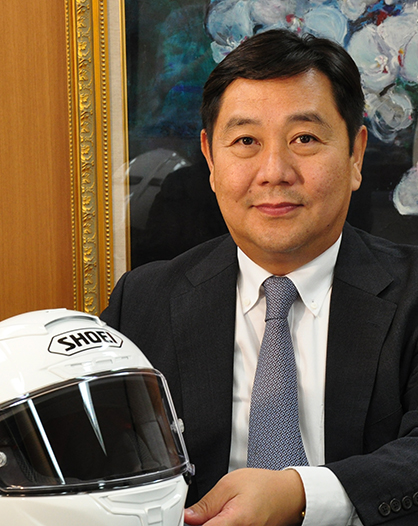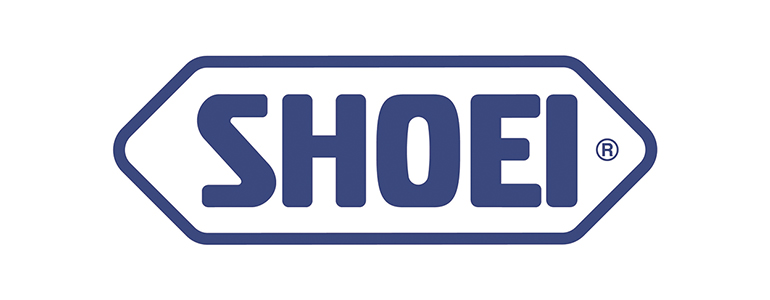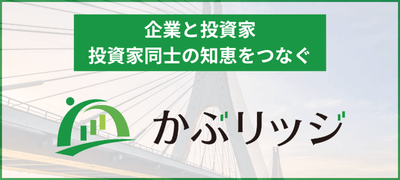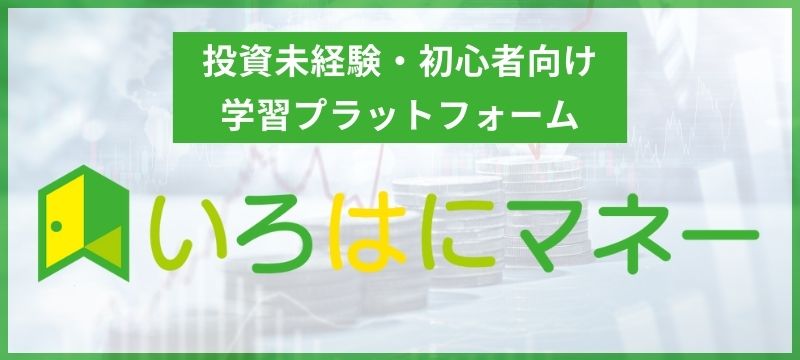| SHOEI Co., Ltd. (7839) |
|
||||||||
Company |
SHOEI Co., Ltd. |
||
Code No. |
7839 |
||
Exchange |
First Section, TSE |
||
Industry |
Other Products (Manufacturing) |
||
President |
Kenichiro Ishida |
||
Headquarters |
Ueno 5-8-5, Taito-ku, Tokyo |
||
Year End |
September |
||
Website |
|||
*Share price as of close on May 8, 2018. Number of shares outstanding at end of the most recent quarter excluding treasury shares. ROE is from the last year end.
|
||||||||||||||||||||||||
|
|
*Estimates are those of the Company. From the fiscal year September 2016, the definition for net income has been changed to net income attributable to parent company shareholders ( Abbreviated as Parent Company Net Income)
This Bridge Report analyzes the earnings results for the first half of fiscal year September 2018 and full year estimates for fiscal year September 2018 for SHOEI Co., Ltd.
|
| Key Points |
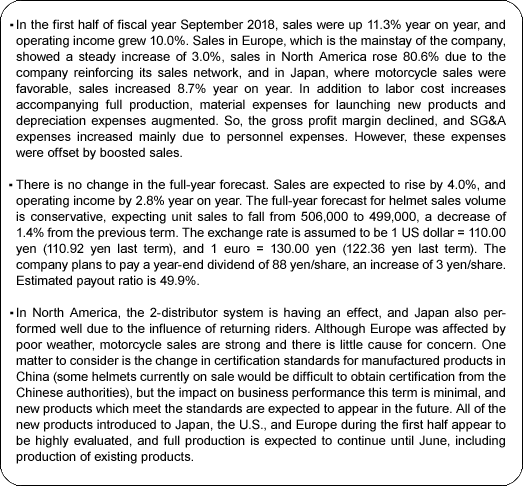 |
| Company Overview |
|
SHOEI is the world's number one helmet manufacturer. While motorcycle helmets are its primary product, the Company also manufactures aircraft and military use helmets supplied to private industry and the government. At the same time, SHOEI boasts of an extensive sales network not only within Japan, but also in about 70 countries throughout various regions around the world including Europe and North America. The "SHOEI" brand is recognized around the world for its high levels of safety and functionality, beautiful appearance, and it is now synonymous with premium grade helmets. Superior design is a key strength of SHOEI. Furthermore, SHOEI endeavors to raise the satisfaction levels of its customers, shareholders and employees through the implementation of a comprehensive three pronged strategy that covers "product strategy," "manufacturing strategy" and "market strategy." The group consists of SHOEI and five consolidated subsidiaries in the United States, Germany (2 subsidiaries), France and Italy.
|
| First Half of Fiscal Year September 2018 Earnings |
 Sales rose by 11.3%, and operating income by 10.0% year on year.
Sales were 7,381 million yen, up 11.3% year on year. Sales in Europe, which is the mainstay of the company, steadily increased to 3,144 million yen, up 3.0% year on year, and sales in North America were 1,279 million yen, up 80.6% year on year due to the company reinforcing its sales network. In addition, motorcycle sales were favorable in Japan, and sales were 2,152 million yen, up 8.7% year on year. Meanwhile, sales in other regions (Asia, Oceania and South America) declined 9.5% year on year to 805 million yen, due to a rebound effect created by substantial growth in the same period last year.
In terms of profit, in addition to labor cost increases accompanying full production, material expenses for launching new products and depreciation expenses augmented. So, the gross profit margin declined, and SG&A expenses increased mainly due to personnel expenses. However, these expenses were offset by boosted sales, and operating income rose 10.0% year on year to 1,674 million yen. Ordinary income grew 13.5% year on year to 1,657 million yen due to a decrease in foreign exchange losses (-54 million yen became -24 million yen).
As for exchange rates, sales conversion rates for the company were 1 US dollar = 109.32 yen (2.51 yen appreciation compared to the previous term), and 1 euro = 133.28 yen (13.64 yen depreciation), while exchange rates used by overseas subsidiaries (as of Dec. 29, 2017) were 1 US dollar = 113.00 yen (3.49 yen appreciation), and 1 euro = 134.94 yen (12.24 yen depreciation). Sales rose by 11.3%, and operating income by 10.0% year on year.
Sales were 7,381 million yen, up 11.3% year on year. Sales in Europe, which is the mainstay of the company, steadily increased to 3,144 million yen, up 3.0% year on year, and sales in North America were 1,279 million yen, up 80.6% year on year due to the company reinforcing its sales network. In addition, motorcycle sales were favorable in Japan, and sales were 2,152 million yen, up 8.7% year on year. Meanwhile, sales in other regions (Asia, Oceania and South America) declined 9.5% year on year to 805 million yen, due to a rebound effect created by substantial growth in the same period last year.
In terms of profit, in addition to labor cost increases accompanying full production, material expenses for launching new products and depreciation expenses augmented. So, the gross profit margin declined, and SG&A expenses increased mainly due to personnel expenses. However, these expenses were offset by boosted sales, and operating income rose 10.0% year on year to 1,674 million yen. Ordinary income grew 13.5% year on year to 1,657 million yen due to a decrease in foreign exchange losses (-54 million yen became -24 million yen).
As for exchange rates, sales conversion rates for the company were 1 US dollar = 109.32 yen (2.51 yen appreciation compared to the previous term), and 1 euro = 133.28 yen (13.64 yen depreciation), while exchange rates used by overseas subsidiaries (as of Dec. 29, 2017) were 1 US dollar = 113.00 yen (3.49 yen appreciation), and 1 euro = 134.94 yen (12.24 yen depreciation).
 In the Japanese market, sales have begun to increase for new motorcycles with 126cc engines or greater, and in the helmet market, there is a continuing trend for high-quality helmets and owning multiple helmets, particularly in the senior citizen age group. In the European market, sales of new motorcycles in Germany, France, and the United Kingdom were less than in FY2017, but they were sure and steady, and the helmet market also performed well. In the North American market, sales of new motorcycles were stagnant, and the helmet market remained flat. The Asian market is generally following a trend of expansion, and although not as much as previously, sales of medium-sized and large-sized motorcycles in China are on an upward trend, and the helmet market remained steady.
Amid these trends, production status was tight in the term's first half, but the combined sales volume from Japan and overseas increased 5% year on year. In the European market, although sales volume declined 9% year on year due to bad weather conditions, sales grew due to the depreciation of the yen and higher unit prices. In the North American market, sales volume rose 112% year on year after increasing the number of distributors from 1 to 2 in October of last year, and beginning shipments of new products in March (it was also affected by the condensing of inventory which took place in the same period last year, prior to switching to 2 distributors). Sales volume in the Japanese market also increased 5% due to returning riders, etc. Meanwhile, there was only a slight increase in sales volume for the Asian market, and the Chinese market also remained flat.
In the Japanese market, sales have begun to increase for new motorcycles with 126cc engines or greater, and in the helmet market, there is a continuing trend for high-quality helmets and owning multiple helmets, particularly in the senior citizen age group. In the European market, sales of new motorcycles in Germany, France, and the United Kingdom were less than in FY2017, but they were sure and steady, and the helmet market also performed well. In the North American market, sales of new motorcycles were stagnant, and the helmet market remained flat. The Asian market is generally following a trend of expansion, and although not as much as previously, sales of medium-sized and large-sized motorcycles in China are on an upward trend, and the helmet market remained steady.
Amid these trends, production status was tight in the term's first half, but the combined sales volume from Japan and overseas increased 5% year on year. In the European market, although sales volume declined 9% year on year due to bad weather conditions, sales grew due to the depreciation of the yen and higher unit prices. In the North American market, sales volume rose 112% year on year after increasing the number of distributors from 1 to 2 in October of last year, and beginning shipments of new products in March (it was also affected by the condensing of inventory which took place in the same period last year, prior to switching to 2 distributors). Sales volume in the Japanese market also increased 5% due to returning riders, etc. Meanwhile, there was only a slight increase in sales volume for the Asian market, and the Chinese market also remained flat.
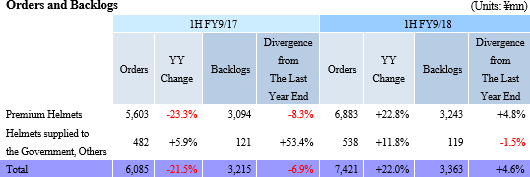 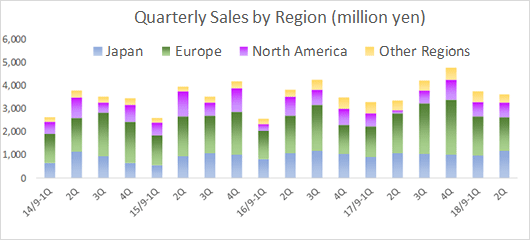 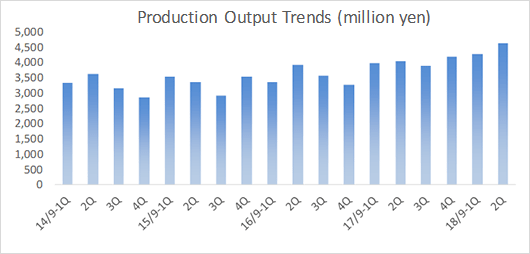 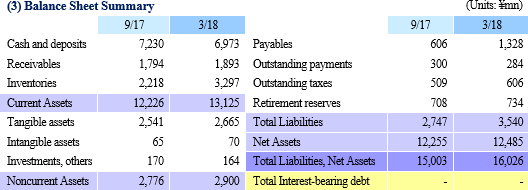 Total assets at the end of the first half were 16,026 million yen, up 1,022 million yen from the end of the previous term. Under debits, inventories increased due to preparation for the bike season in spring, and tangible assets grew due to capital investment. Under credit, payables and net assets rose. Equity ratio was 77.9% (81.7% at the end of the previous term).
Total assets at the end of the first half were 16,026 million yen, up 1,022 million yen from the end of the previous term. Under debits, inventories increased due to preparation for the bike season in spring, and tangible assets grew due to capital investment. Under credit, payables and net assets rose. Equity ratio was 77.9% (81.7% at the end of the previous term).
|
| Fiscal Year September 2018 Earnings Estimates |
 There is no change in the full-year forecast. Sales are expected to rise by 4.0%, and operating income by 2.8% year on year.
Helmet sales volume increased 5% year on year during the first half, but the full-year forecast is conservative, expecting unit sales to fall from 506,000 to 499,000, a decrease of 1.4% compared to the previous term. Progress rates in regards to the full-year forecast are 45.4% of net sales (42.4% in the same period last year), 47.0% of operating income (44.0%), 46.4% of ordinary income (41.8%), and 46.2% of net income (42.3%).
SHOEI has established foreign exchange rate assumptions (Average for the coming term for the parent, and conversion rate for subsidiaries) in the coming term of ¥110.0 per United States dollar, and ¥130.00 per euro (Compared with ¥110.92 and ¥122.36 in the term just ended). The currency sensitivity to every ¥1 movement relative to the dollar suggests a ¥19 and ¥11 million changes in sales and operating income respectively, and ¥45 and ¥27 million change for each ¥1 movement relative to the euro.
Measures responding to the need for new facilities to improve productivity and to the outlook for increases in demand are expected to contribute to an 18.2% year-on-year increase in capital investments to ¥1.268 billion. At the same time, a 53.4% year-on-year increase in depreciation to ¥928 million has been factored into estimates for the coming term.
Dividends are expected to be raised by ¥3 to ¥88 per share, for an anticipated dividend payout ratio of 49.9%.
(2) State Council of China changes certification standards for manufactured products
Currently, in terms of safety standards, helmets sold to China are exported under the Japanese Industrial Standards (JIS), but due to the State Council of China announcing a change in certification standards for manufactured products last September (items subject to the change were released on Oct. 11), there will be new safety standards (*GB 811-2010) in China (excluding Hong Kong) effective from Aug. 1, 2018. Because some helmets currently on sale would be difficult to obtain certification from the Chinese authorities under the new standard, the company is considering changing specifications and is reviewing product strategy. Additionally, they adjusted the estimated sales volume this year for the Chinese market, reducing the number by 5,700 to about 17,000 units, which is comparable to the previous term. However, since the impact on profit and loss is minor, there is no change in the initial forecast.
Main features of the GB811-2010 standard There is no change in the full-year forecast. Sales are expected to rise by 4.0%, and operating income by 2.8% year on year.
Helmet sales volume increased 5% year on year during the first half, but the full-year forecast is conservative, expecting unit sales to fall from 506,000 to 499,000, a decrease of 1.4% compared to the previous term. Progress rates in regards to the full-year forecast are 45.4% of net sales (42.4% in the same period last year), 47.0% of operating income (44.0%), 46.4% of ordinary income (41.8%), and 46.2% of net income (42.3%).
SHOEI has established foreign exchange rate assumptions (Average for the coming term for the parent, and conversion rate for subsidiaries) in the coming term of ¥110.0 per United States dollar, and ¥130.00 per euro (Compared with ¥110.92 and ¥122.36 in the term just ended). The currency sensitivity to every ¥1 movement relative to the dollar suggests a ¥19 and ¥11 million changes in sales and operating income respectively, and ¥45 and ¥27 million change for each ¥1 movement relative to the euro.
Measures responding to the need for new facilities to improve productivity and to the outlook for increases in demand are expected to contribute to an 18.2% year-on-year increase in capital investments to ¥1.268 billion. At the same time, a 53.4% year-on-year increase in depreciation to ¥928 million has been factored into estimates for the coming term.
Dividends are expected to be raised by ¥3 to ¥88 per share, for an anticipated dividend payout ratio of 49.9%.
(2) State Council of China changes certification standards for manufactured products
Currently, in terms of safety standards, helmets sold to China are exported under the Japanese Industrial Standards (JIS), but due to the State Council of China announcing a change in certification standards for manufactured products last September (items subject to the change were released on Oct. 11), there will be new safety standards (*GB 811-2010) in China (excluding Hong Kong) effective from Aug. 1, 2018. Because some helmets currently on sale would be difficult to obtain certification from the Chinese authorities under the new standard, the company is considering changing specifications and is reviewing product strategy. Additionally, they adjusted the estimated sales volume this year for the Chinese market, reducing the number by 5,700 to about 17,000 units, which is comparable to the previous term. However, since the impact on profit and loss is minor, there is no change in the initial forecast.
Main features of the GB811-2010 standard
 Penetration resistance test: In the 3 kg × 3 m penetration test, the striker should not come in contact with the dummy's head. Penetration resistance test: In the 3 kg × 3 m penetration test, the striker should not come in contact with the dummy's head.
 Helmet weight limit: All sizes of full face or jet helmets (A type) should weigh less than 1,600 g.
Japan Industrial Standard (JIS) Helmet weight limit: All sizes of full face or jet helmets (A type) should weigh less than 1,600 g.
Japan Industrial Standard (JIS)
 Penetration resistance test: In the 3 kg × 2 m penetration test, the striker should not come in contact with the dummy's head. Penetration resistance test: In the 3 kg × 2 m penetration test, the striker should not come in contact with the dummy's head.
 Helmet weight limit: None in particular. Helmet weight limit: None in particular.
|
| Conclusions |
|
In North America, the 2-distributor system is having an effect, and Japan also performed well due to the influence of returning riders. Although Europe was affected by poor weather, motorcycle sales are strong and there is little cause for concern. One matter to consider is the change in certification standards for manufactured products in China, but its impact on business performance this term is minimal, and new products which meet the standards are expected to appear from the next term.
In the first quarter, the company released the on-road full face type helmet "RYD" in Japan, as well as the off-road motocross helmet "VFX-EVO" for off-road use in North America. In the second quarter, they will introduce the off-road motocross helmet "VFX-EVO" in Europe, and the next-generation model of the NEOTEC helmet which is a system helmet with sun visor, "NEOTEC II," in Europe and America. (the helmets are scheduled to be released in Japan sometime between spring and summer due to limitations in production capacity). All of these products appear to be highly evaluated, and full production is expected to continue until June, including production of existing products.
|
| <Reference: Regarding Corporate Governance> |
 Basic Views
Our company considers it as the most important issue in corporate management to seek steady growth and profit in mid-long term, improving the company value. To realize this, we think it is important to build good relationships between us and our shareholders, client companies, employees, and each stakeholder and supply good products that can make our clients satisfied. This view is written on "World's Top Levels in Three Realms ( World's Top Product Quality, World's Top Cost Competitiveness, World's Most Delightful Company" and "Basic Policy" to let all of us know. We are going to carry out various measures to enhancing our corporate governance.
<Reasons for Non-compliance with the Principles of the Corporate Governance Code (Excerpts)>
Basic Views
Our company considers it as the most important issue in corporate management to seek steady growth and profit in mid-long term, improving the company value. To realize this, we think it is important to build good relationships between us and our shareholders, client companies, employees, and each stakeholder and supply good products that can make our clients satisfied. This view is written on "World's Top Levels in Three Realms ( World's Top Product Quality, World's Top Cost Competitiveness, World's Most Delightful Company" and "Basic Policy" to let all of us know. We are going to carry out various measures to enhancing our corporate governance.
<Reasons for Non-compliance with the Principles of the Corporate Governance Code (Excerpts)>
 Principle 4-2 Principle 4-2 Roles and duties of the Board of Directors (2)
At SHOEI, the positions of executives and staff are always fair, and the company environment does not impede proposals. The executives (called "advisors" or "directors" at the company) in the management team recognize issues in the workplace for which he or she was responsible, and present those issues and their possible solutions during discussion venues such as management meetings. At these venues, honest and open-minded discussions are held between the proposer, director, and executives. Remuneration for senior executives is a fixed annual salary based on ability, contribution to the previous year's performance, etc., while taking lifestyle factors into consideration.
<Disclosure Based on the Principles of the Corporate Governance Code (Excerpts)> Roles and duties of the Board of Directors (2)
At SHOEI, the positions of executives and staff are always fair, and the company environment does not impede proposals. The executives (called "advisors" or "directors" at the company) in the management team recognize issues in the workplace for which he or she was responsible, and present those issues and their possible solutions during discussion venues such as management meetings. At these venues, honest and open-minded discussions are held between the proposer, director, and executives. Remuneration for senior executives is a fixed annual salary based on ability, contribution to the previous year's performance, etc., while taking lifestyle factors into consideration.
<Disclosure Based on the Principles of the Corporate Governance Code (Excerpts)>
 Principle 1-4 Principle 1-4 Strategically held shares
We do not hold the shares of other companies in a strategic manner or conduct any risky securities investment. Strategically held shares
We do not hold the shares of other companies in a strategic manner or conduct any risky securities investment.
 Principle 1-7 Principle 1-7 Transactions among parties concerned
Our company has no plans to make transactions with parties concerned other than the transactions for distributorship, outsourcing of distribution and marketing with subsidiaries and related transactions, and has not made such transactions so far. In addition, the "action guidelines" in the compliance regulations stipulate that personal matters shall be distinguished from business matters in the transactions with the company that are handled by executives, employees, or related personnel. We will not make any transactions among parties concerned other than the transactions with subsidiaries. Transactions among parties concerned
Our company has no plans to make transactions with parties concerned other than the transactions for distributorship, outsourcing of distribution and marketing with subsidiaries and related transactions, and has not made such transactions so far. In addition, the "action guidelines" in the compliance regulations stipulate that personal matters shall be distinguished from business matters in the transactions with the company that are handled by executives, employees, or related personnel. We will not make any transactions among parties concerned other than the transactions with subsidiaries.
 Principle 5-1 Principle 5-1 Policy for constructive dialogue with shareholders
Our company always tries to communicate with shareholders and investors in a fair manner, and promote active dialogues with them through one-on-one meetings, including the briefing sessions for individual investors and the financial results briefing sessions for institutional investors, the mass media and financial institutions, which are held by executives and the section in charge of IR (the business administration division).
In addition, the shareholding ratio of foreign investors is 32.3% (the term ended Sep. 2015). We continue highly transparent, sincere dialogues with foreign investors, and IR activities. In addition, the ratio of foreign shareholders is around 33%, and the company continues to conduct IR activities and open sincere, transparent dialogue with foreign investors. Policy for constructive dialogue with shareholders
Our company always tries to communicate with shareholders and investors in a fair manner, and promote active dialogues with them through one-on-one meetings, including the briefing sessions for individual investors and the financial results briefing sessions for institutional investors, the mass media and financial institutions, which are held by executives and the section in charge of IR (the business administration division).
In addition, the shareholding ratio of foreign investors is 32.3% (the term ended Sep. 2015). We continue highly transparent, sincere dialogues with foreign investors, and IR activities. In addition, the ratio of foreign shareholders is around 33%, and the company continues to conduct IR activities and open sincere, transparent dialogue with foreign investors.
Disclaimer
This report is intended solely for information purposes, and is not intended as a solicitation to invest in the shares of this company. The information and opinions contained within this report are based on data made publicly available by the Company, and comes from sources that we judge to be reliable. However we cannot guarantee the accuracy or completeness of the data. This report is not a guarantee of the accuracy, completeness or validity of said information and or opinions, nor do we bear any responsibility for the same. All rights pertaining to this report belong to Investment Bridge Co., Ltd., which may change the contents thereof at any time without prior notice. All investment decisions are the responsibility of the individual and should be made only after proper consideration.Copyright(C) 2018 Investment Bridge Co., Ltd., All Rights Reserved |

